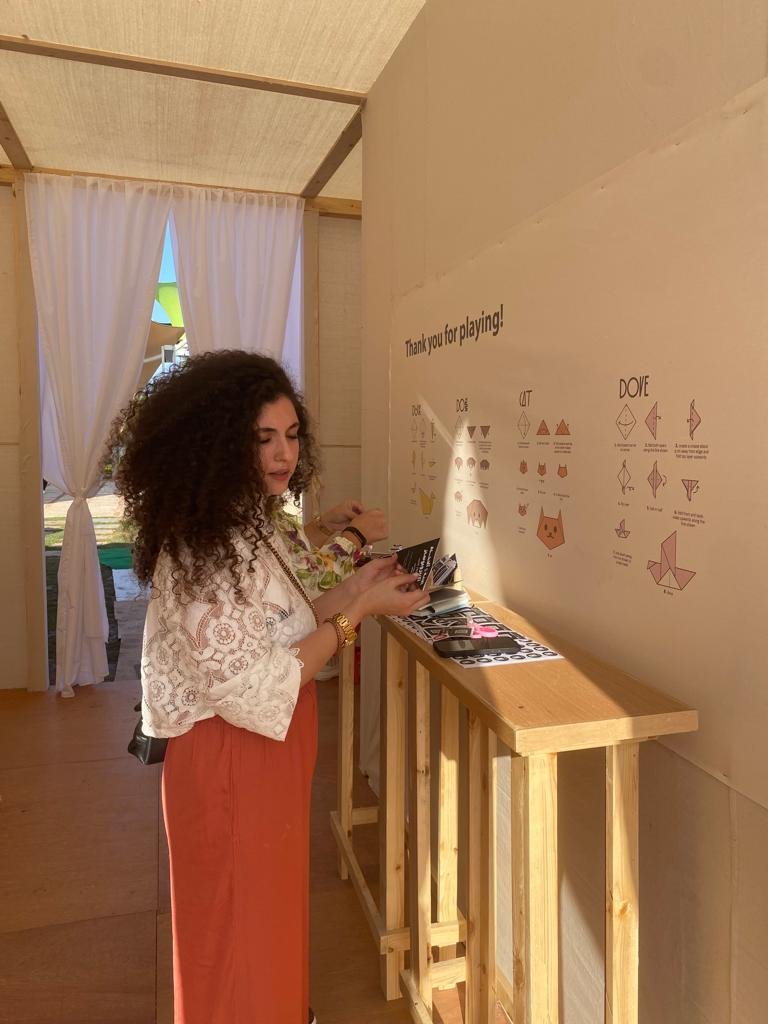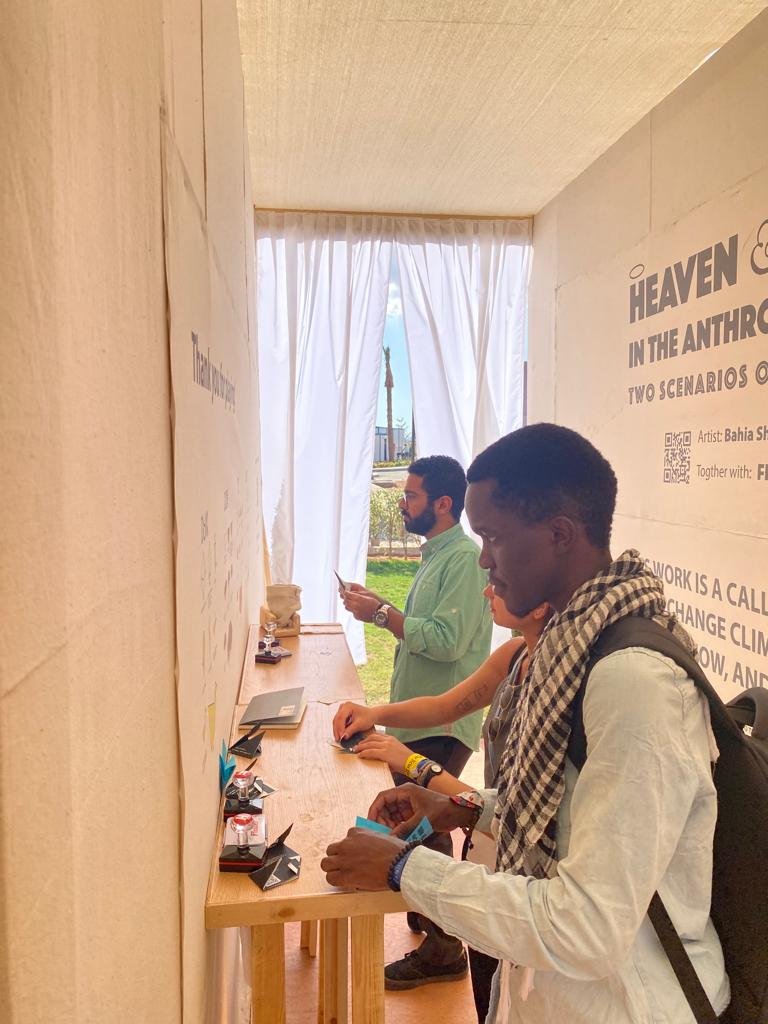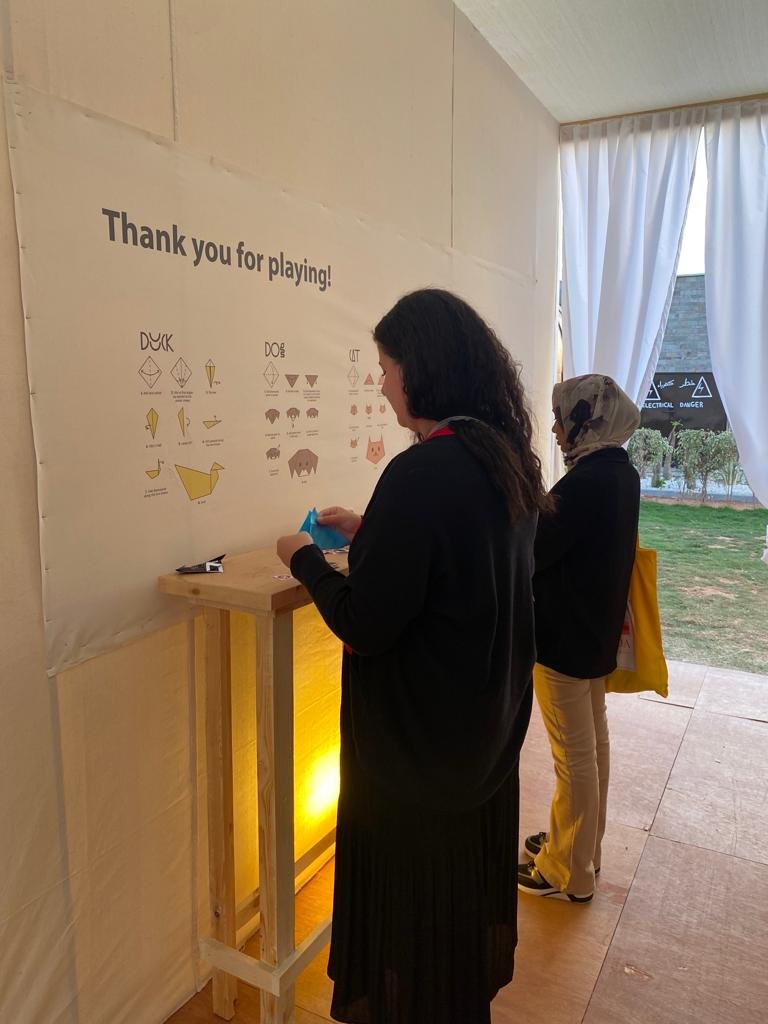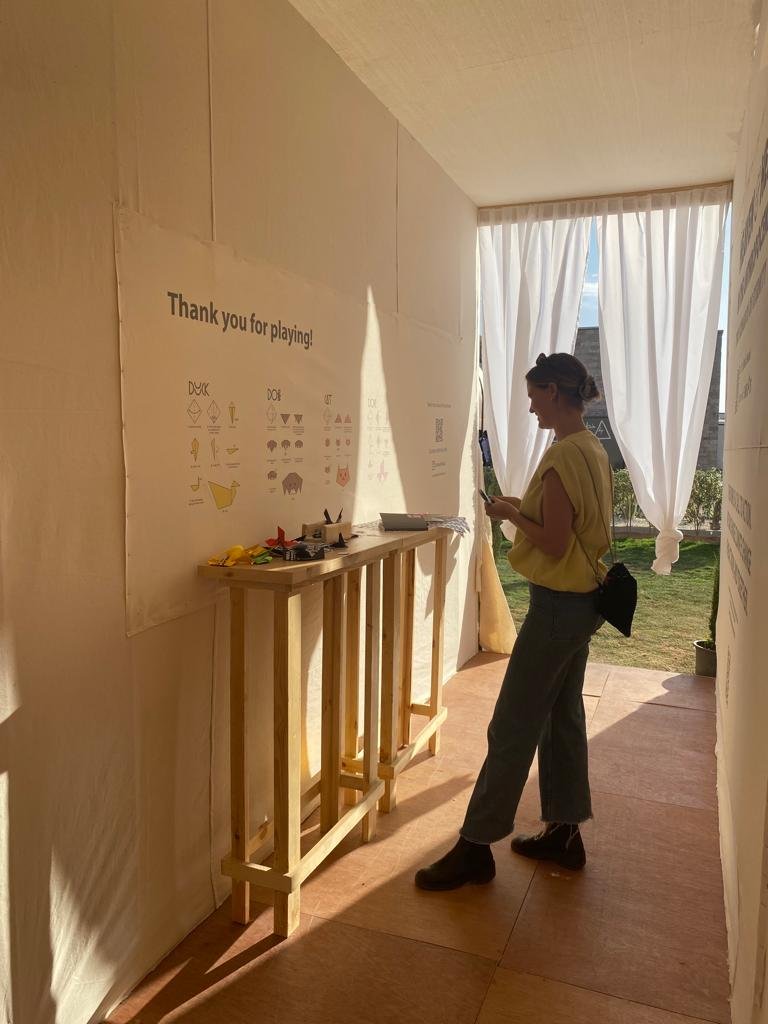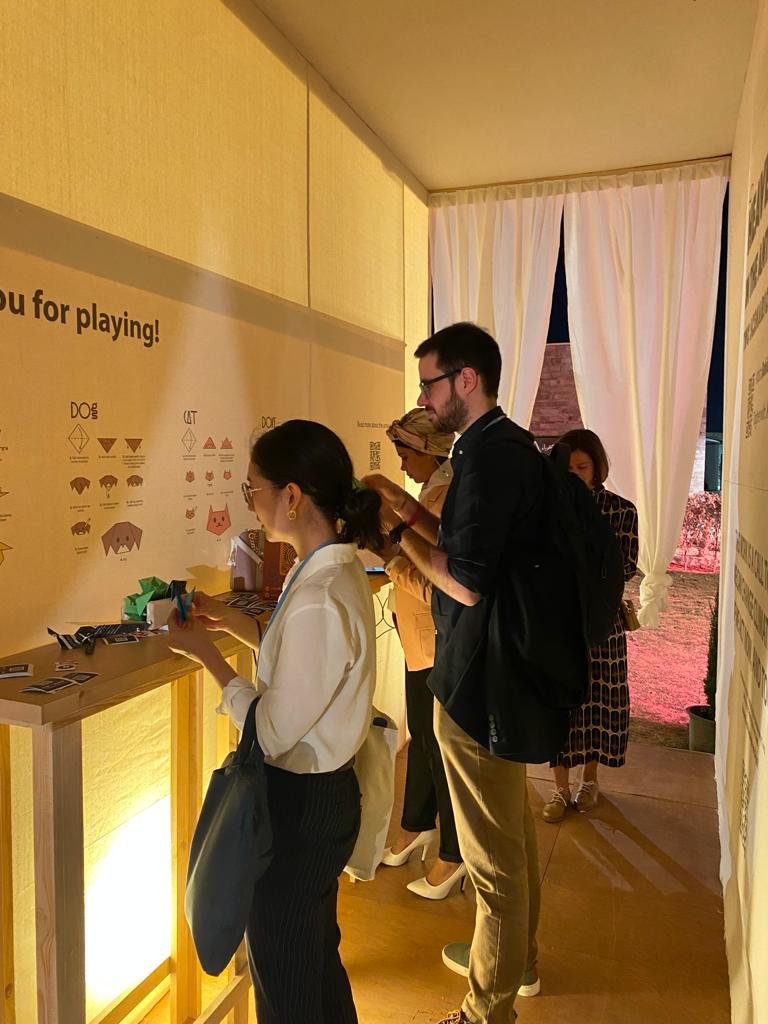Heaven & Hell
in the Anthropocene
Two Scenarios of Eternity
On site at the Green Zone at COP27, Sharm El-Sheikh
Heaven & Hell in the Anthropocene is an experiential artwork that informs the audience on the possible futures we face as humans if we do – or don’t – change our attitudes towards the environment.
A study once concluded that people’s beliefs about climate change are closely tied to the temperature they’ve recently experienced – in other words, people sitting in warmer rooms are more likely to say that ‘global warming’ is a problem.
We wondered – how do we turn this insight into an impactful artistic experience, and raise questions around responsibility, participation and action?
For this work, we collaborated with prominent Egyptian-Lebanese contemporary artist Bahia Shehab – and launched it in Sharm El-Sheikh, Egypt, as part of COP27 – the 2022 United Nations Climate Change Conference, that pretty much decides the future of our planet.
We fought our first instinct to just hack and heat COP27’s plenary rooms – and instead invited decision-makers to experience two scenarios of eternity in an immersive public art installation.
Many governments, companies and individuals are still insensitive to scientific facts and numbers – thus, a more physical and visceral experience is needed.
This installation is made replicable under an open license – with its key characteristics and aesthetics published online in a DIY manual, so that movements and collectives around the world can recreate it in their cities. Interested? Get in touch – hello [at] fineacts.co
Featured in

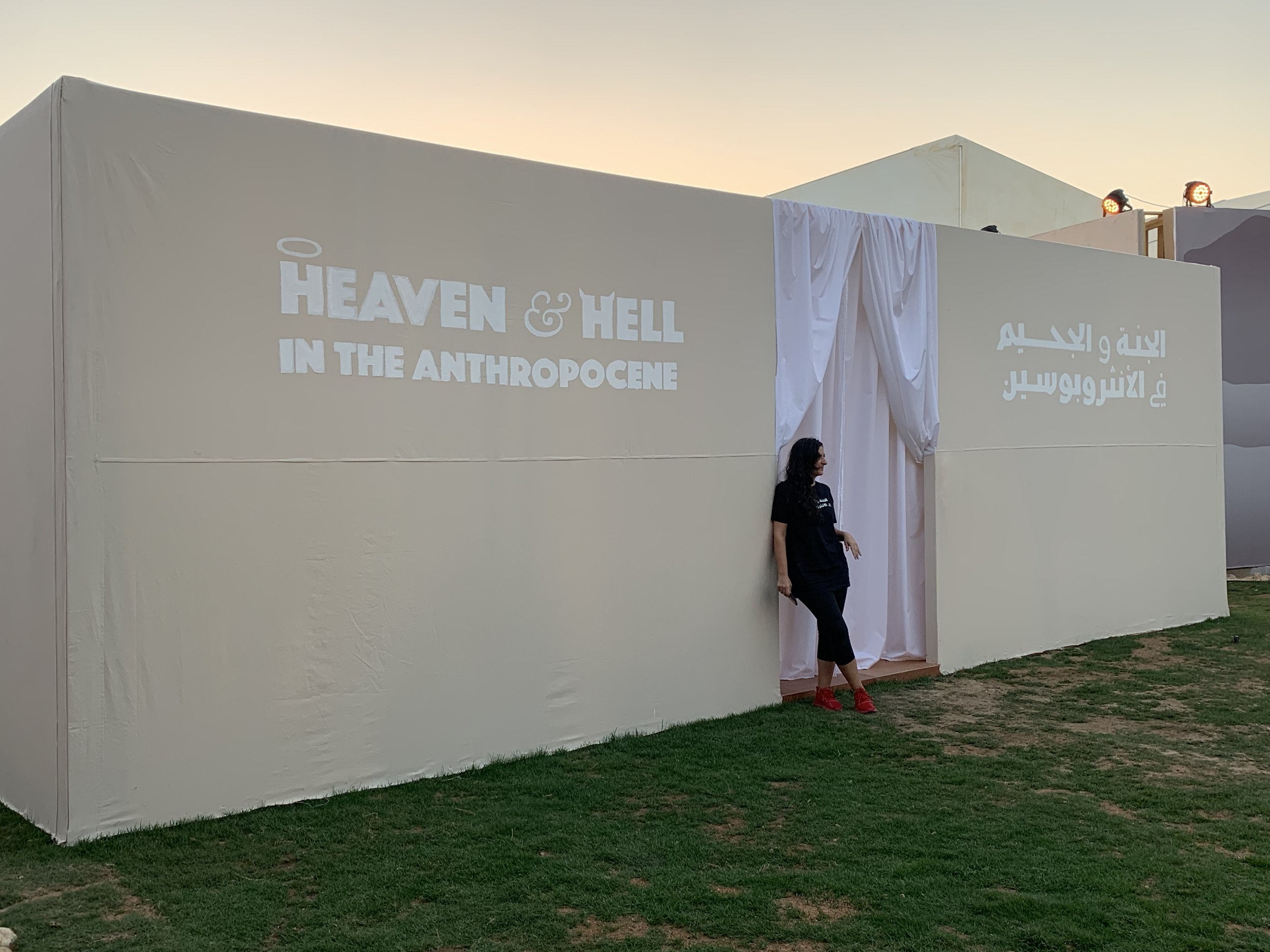
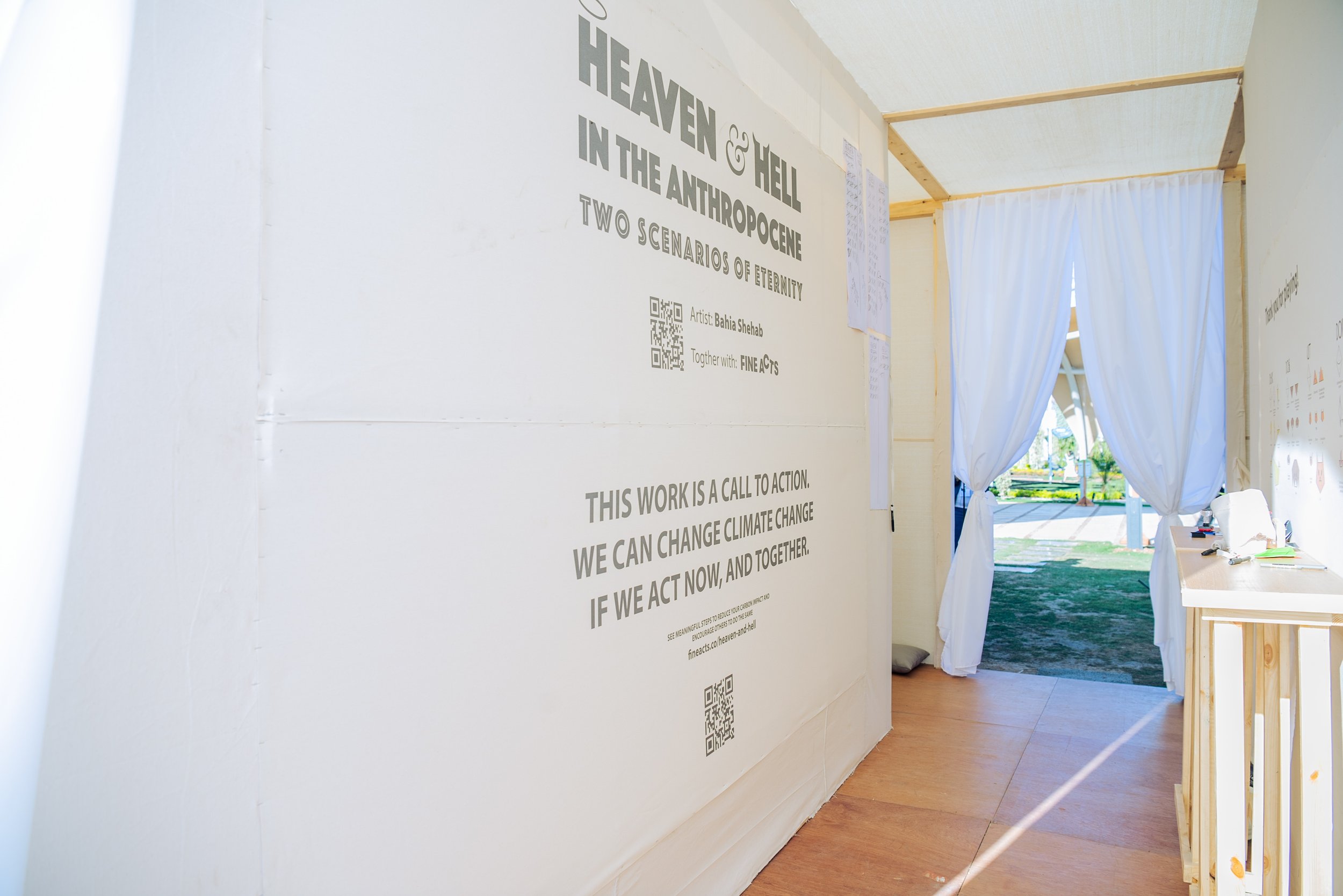
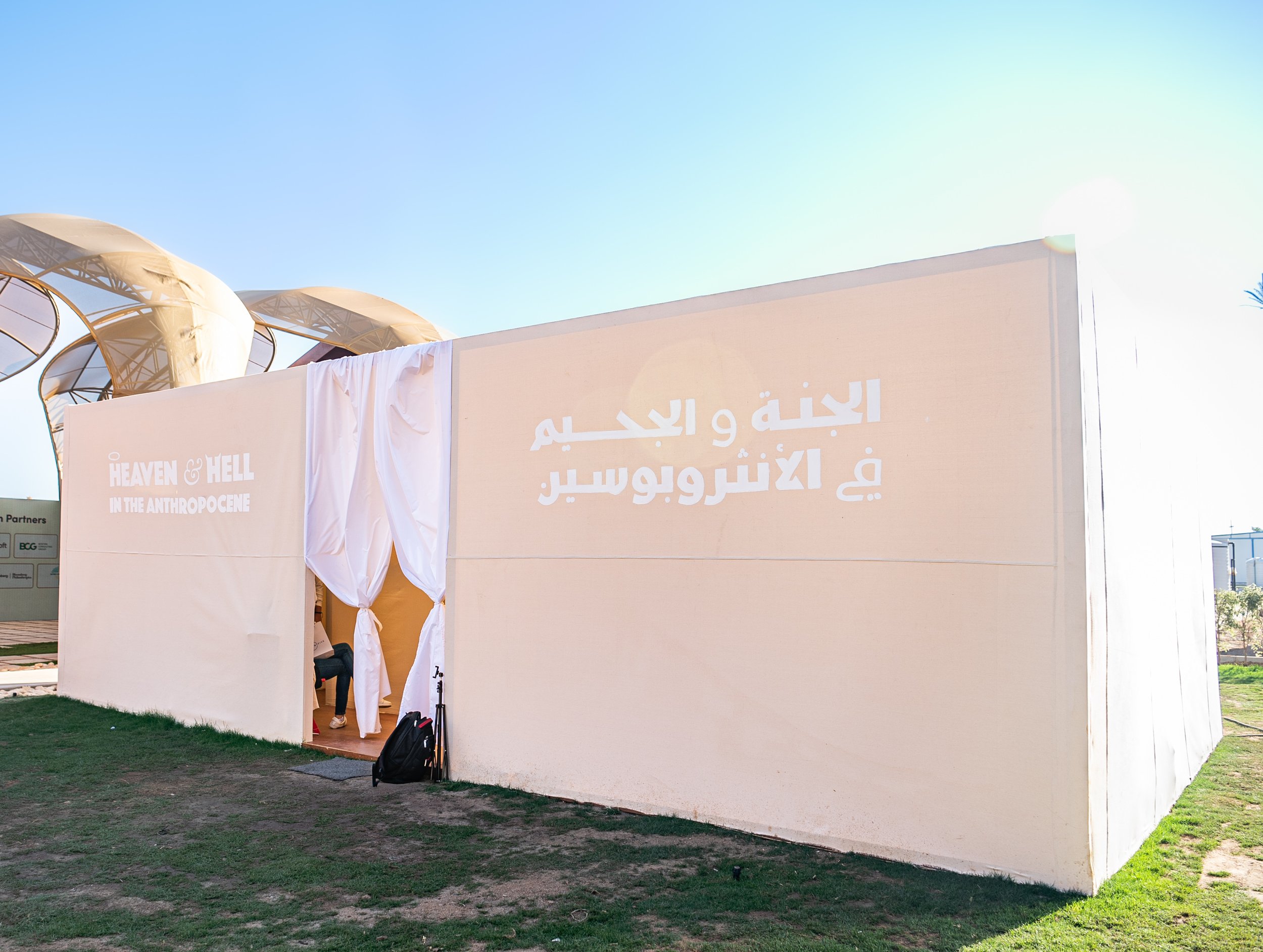
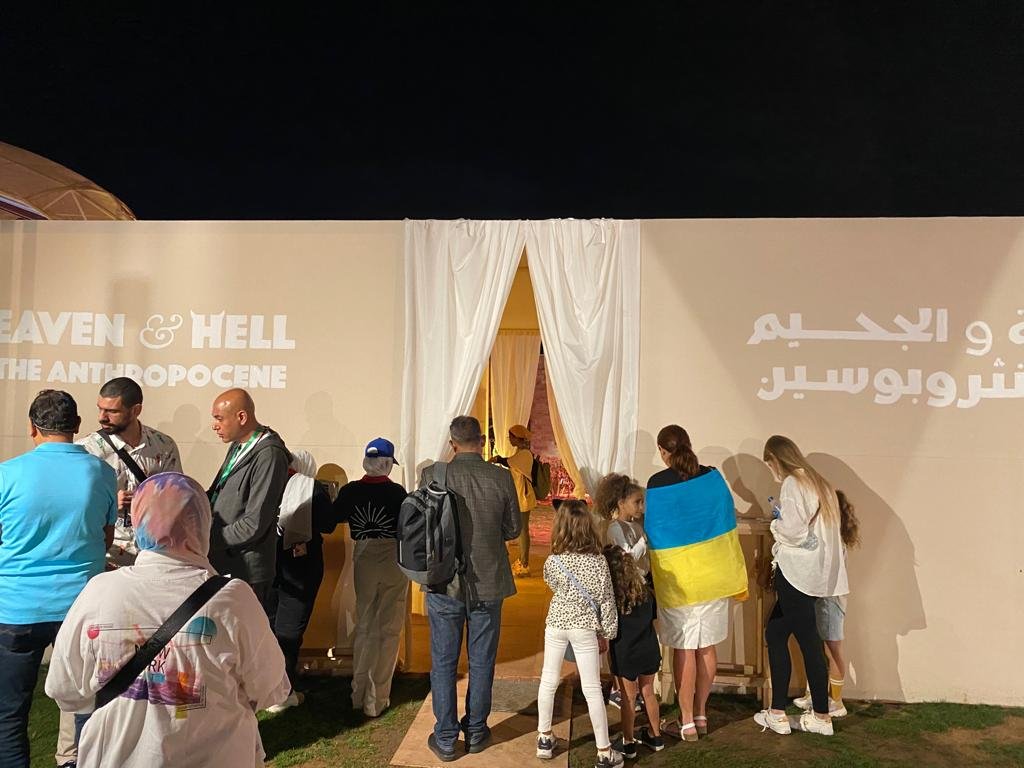
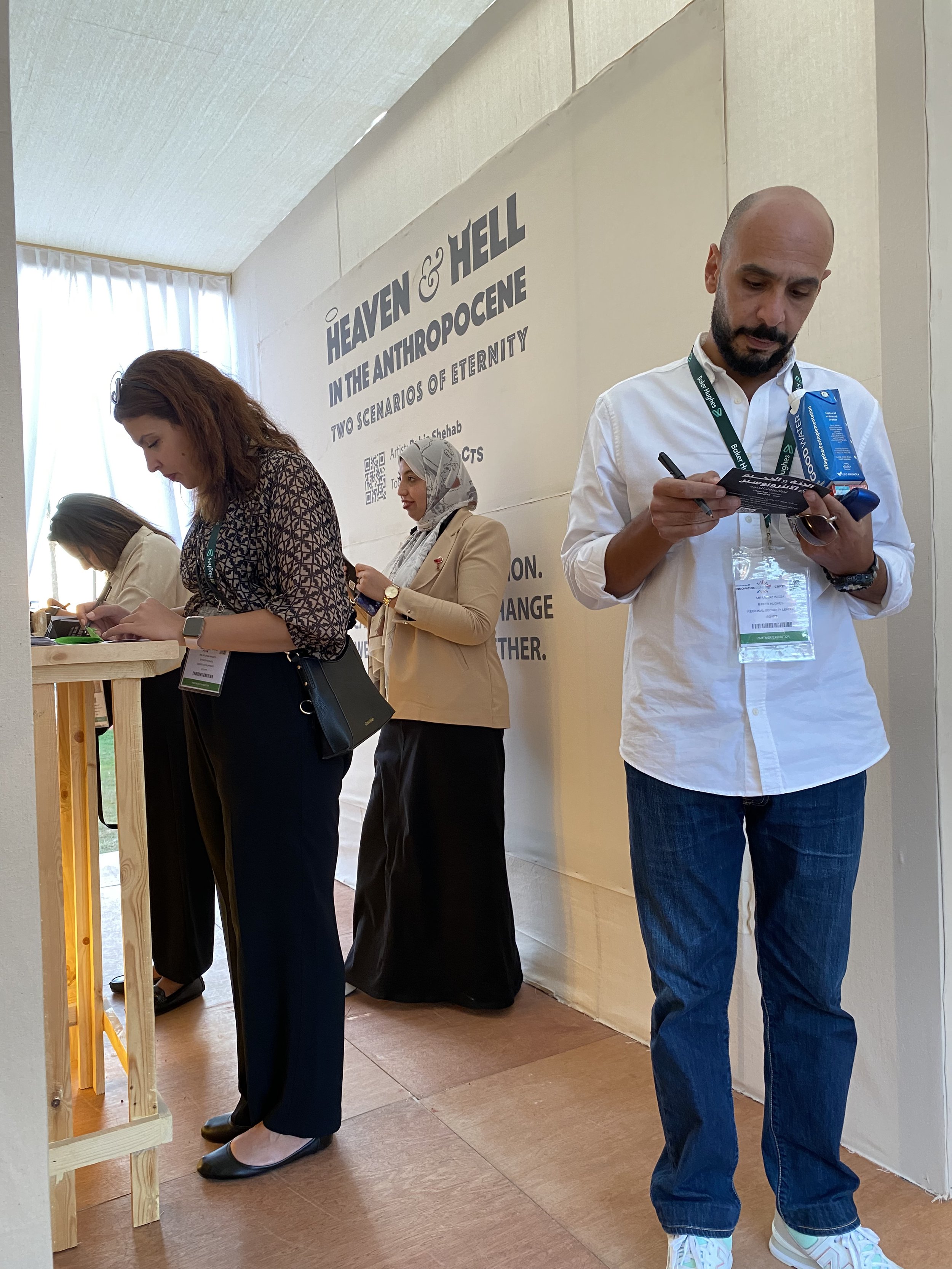
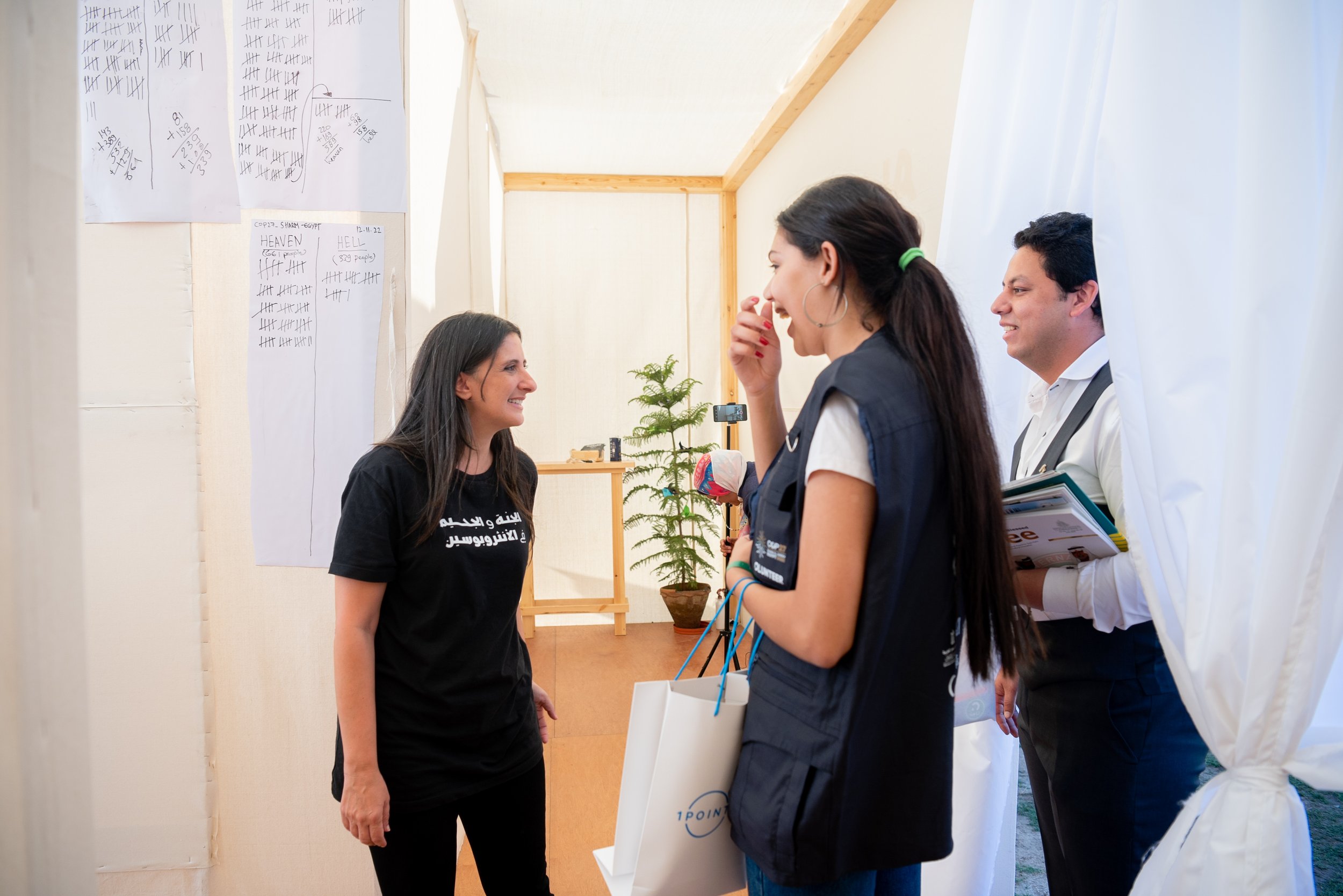
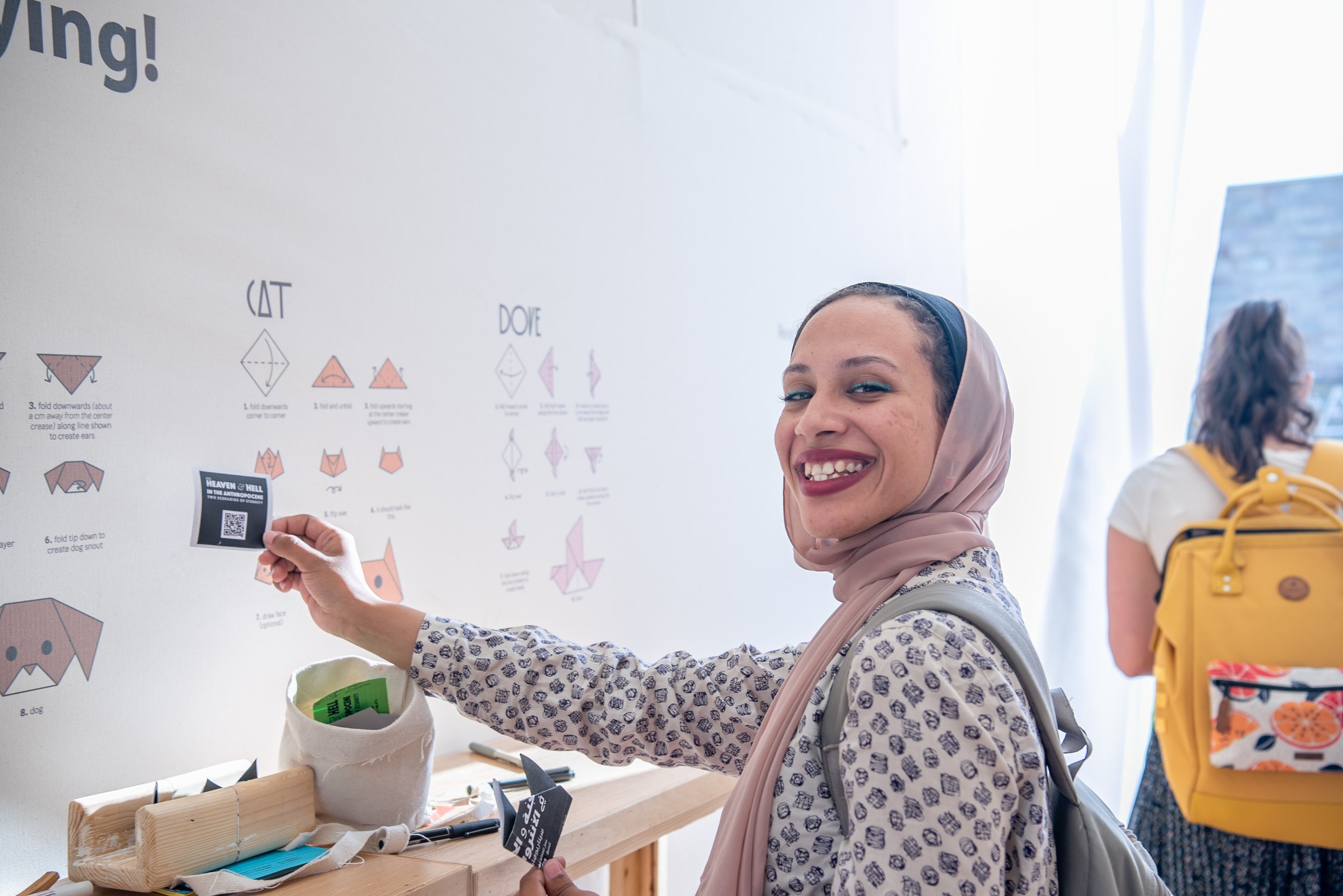
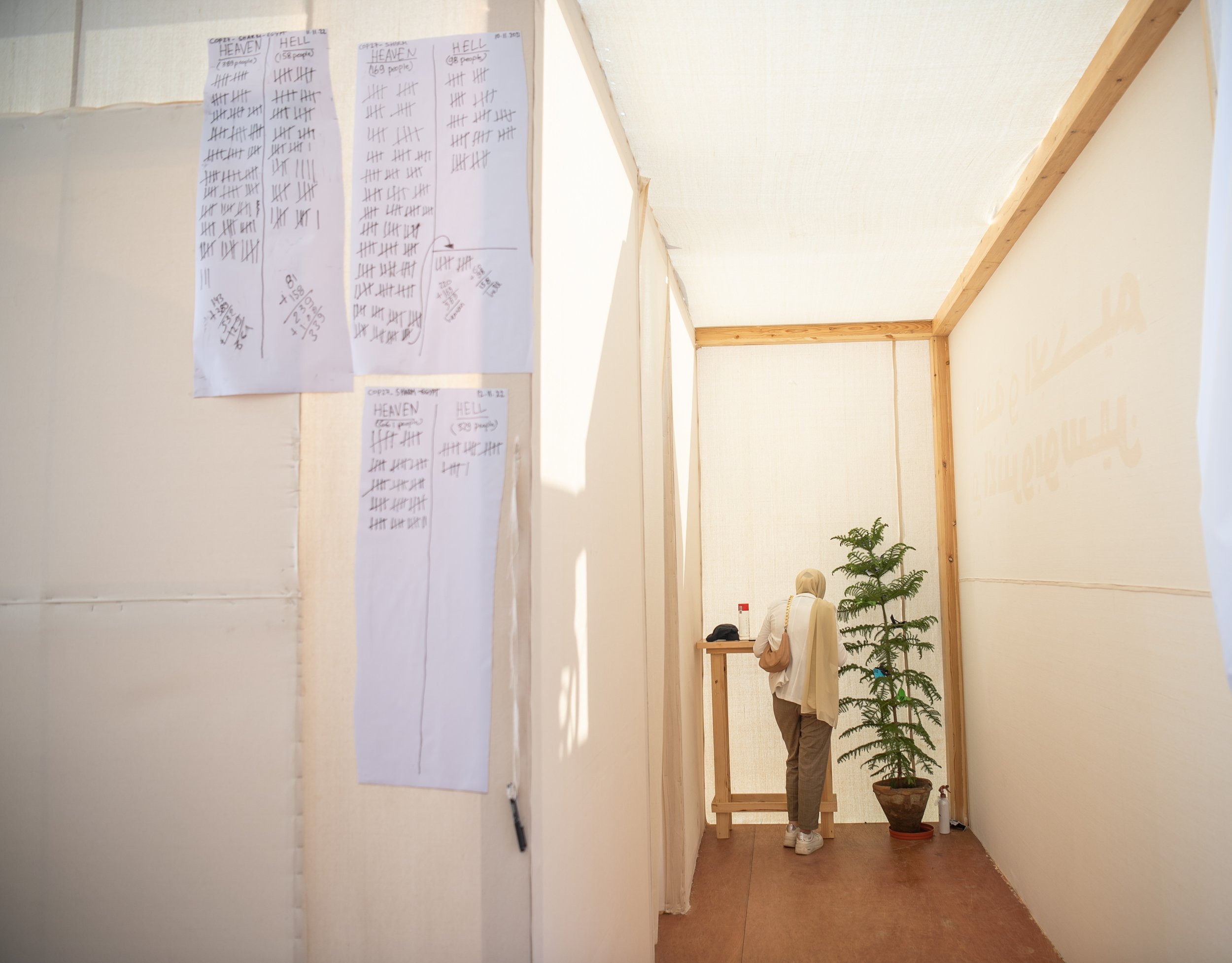

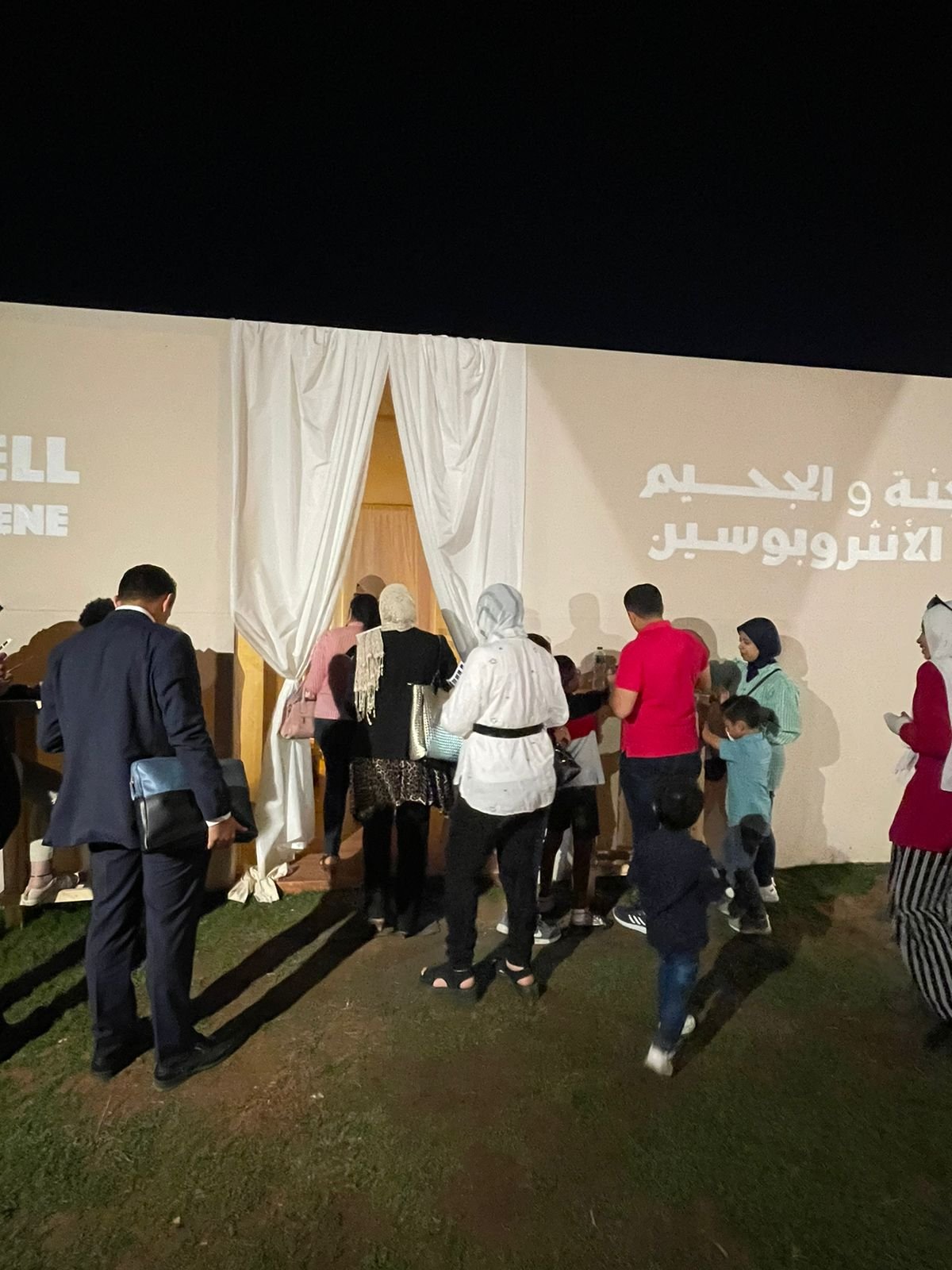
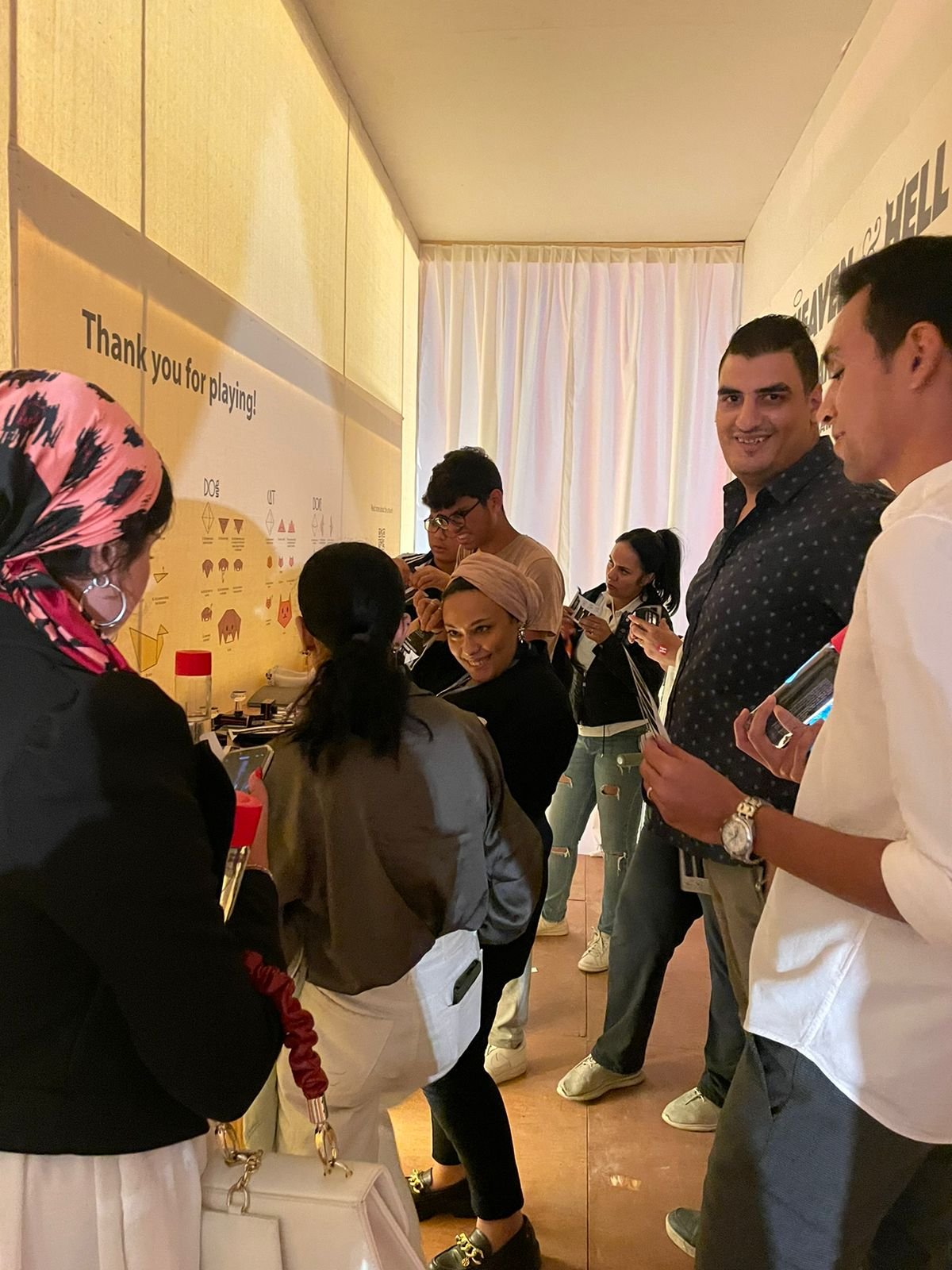
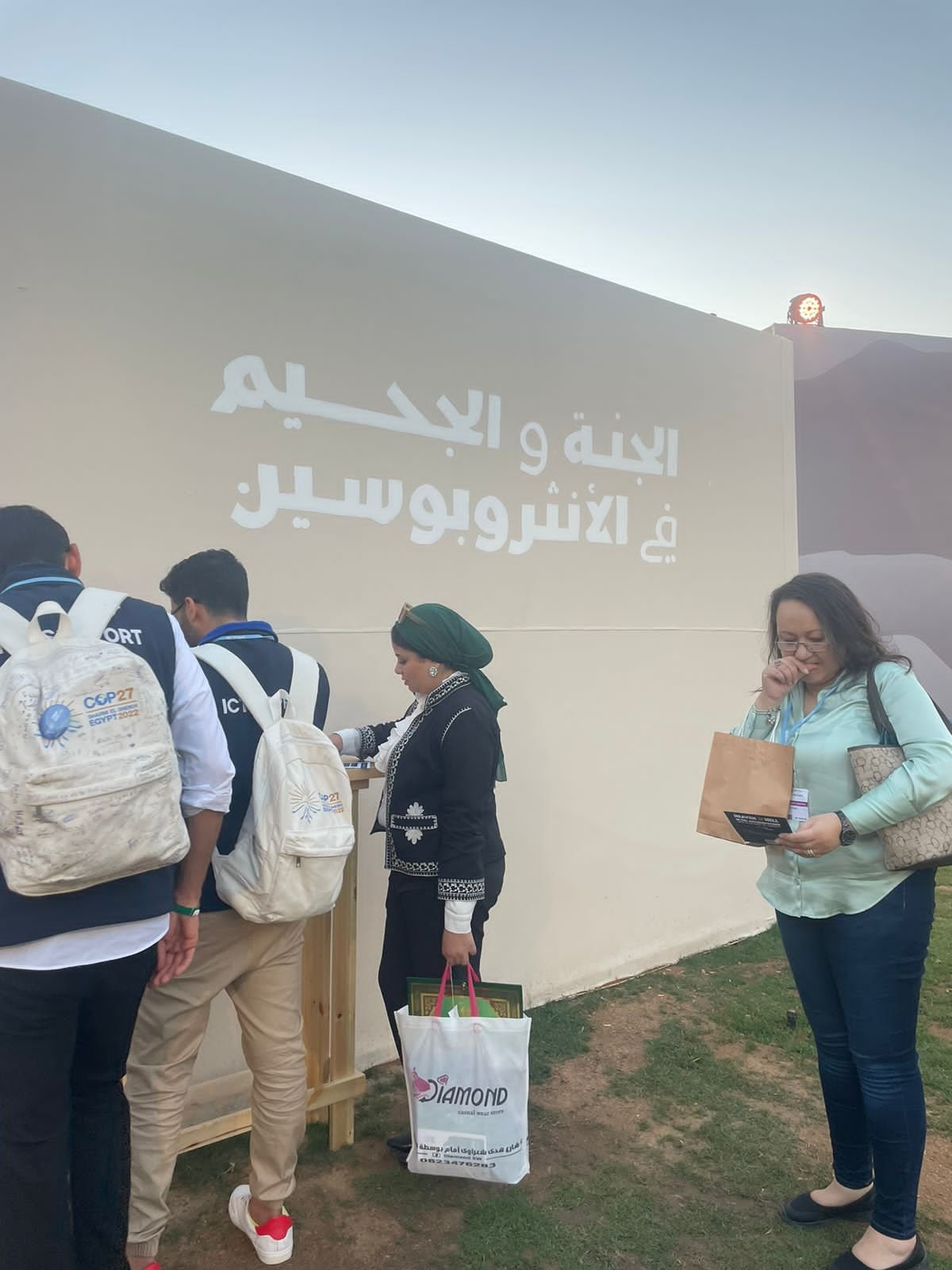
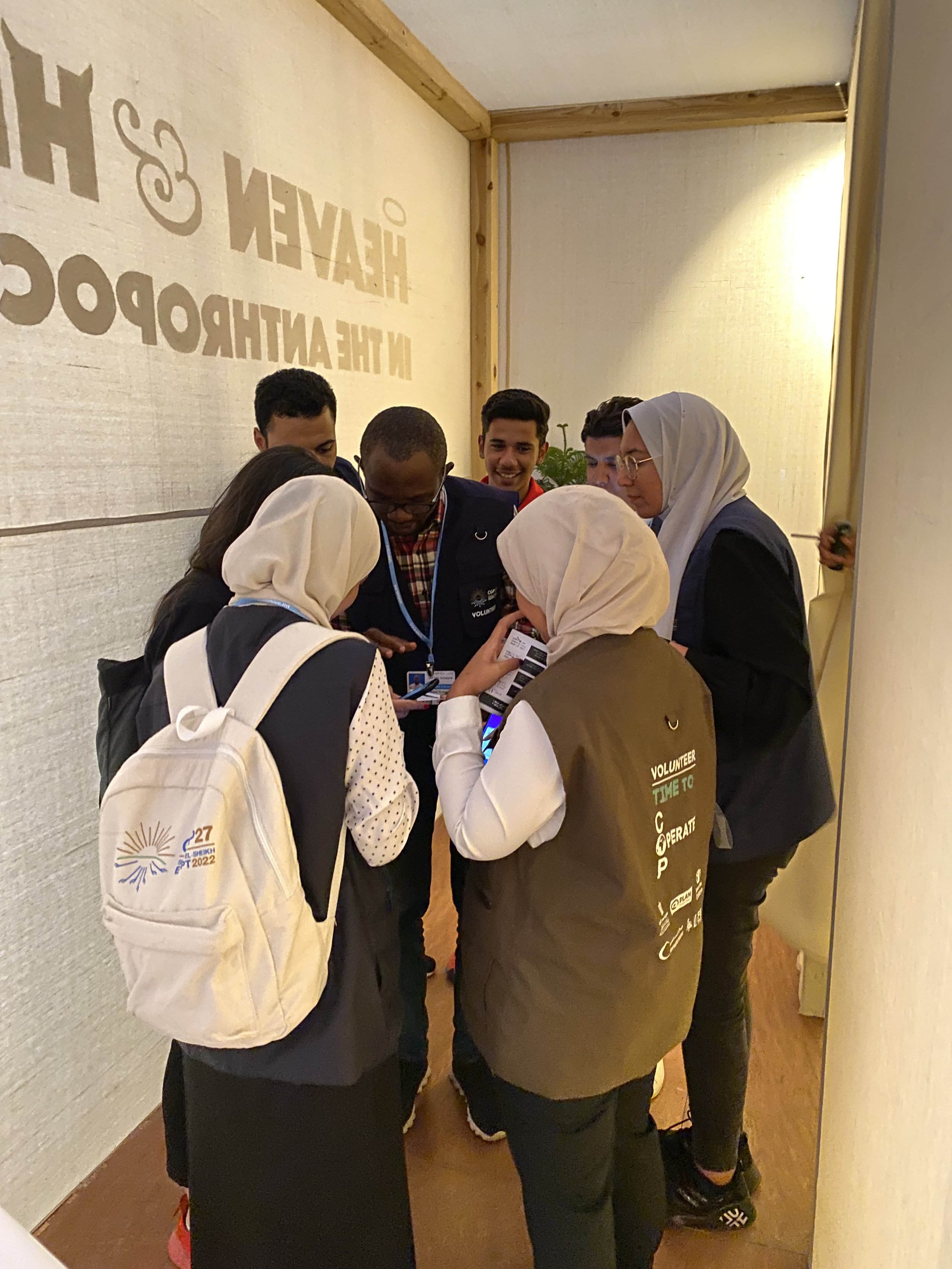
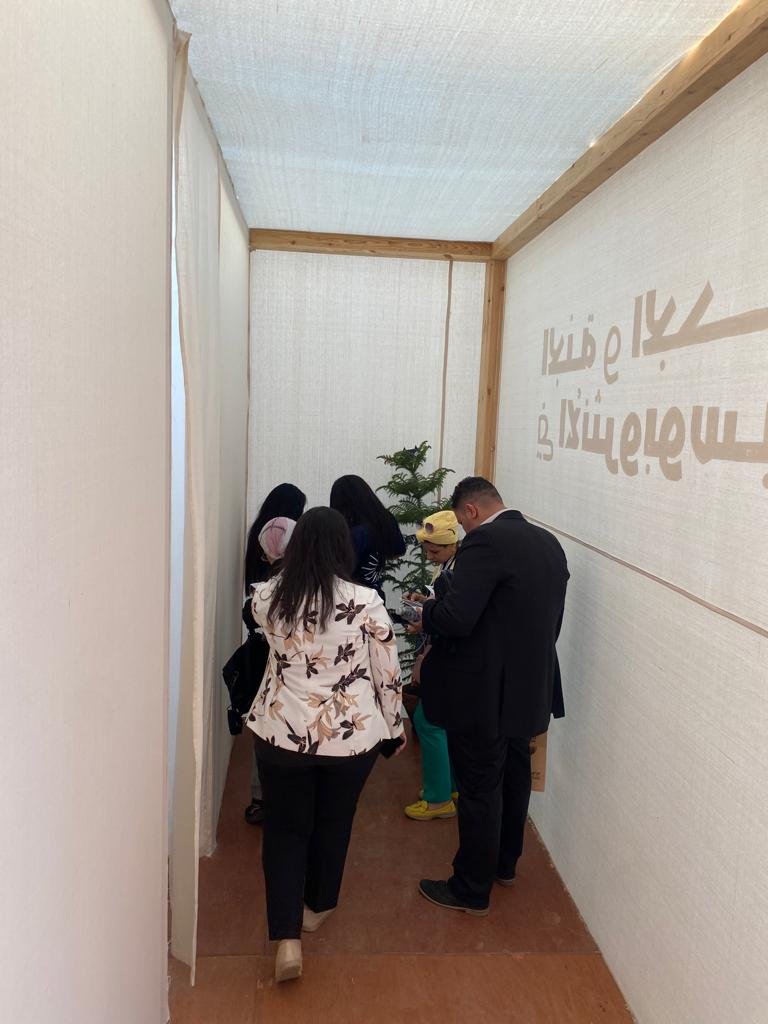
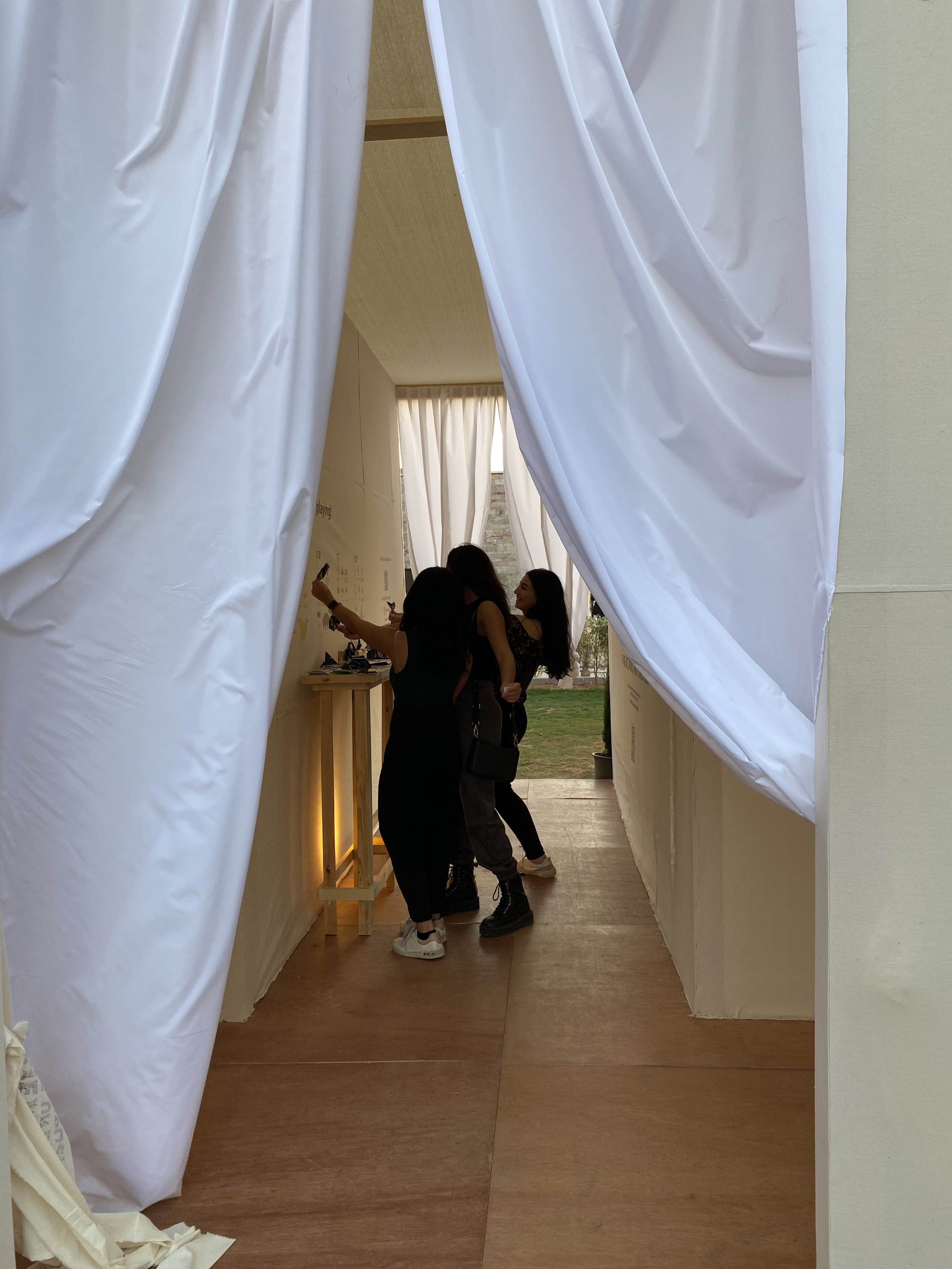
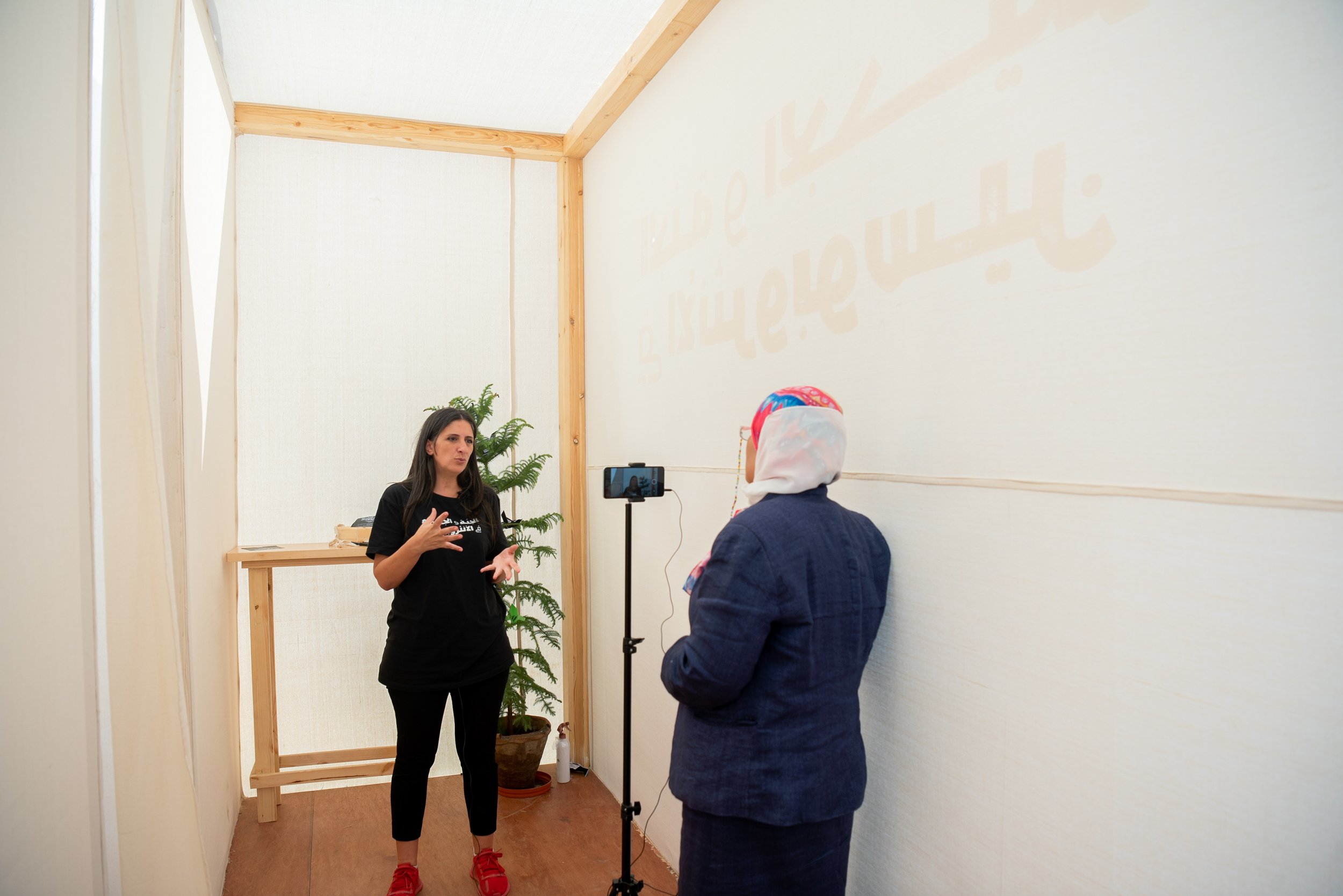
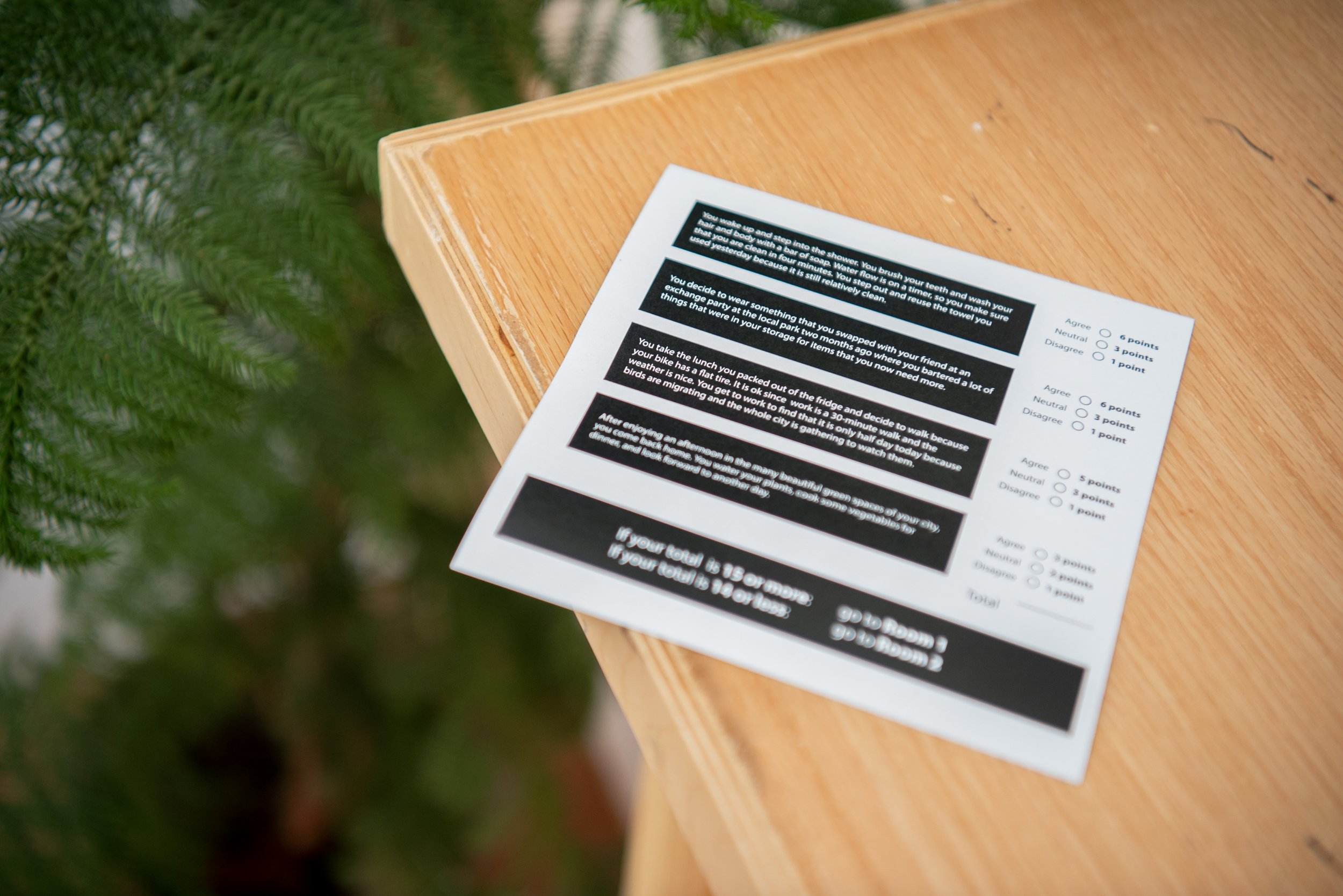

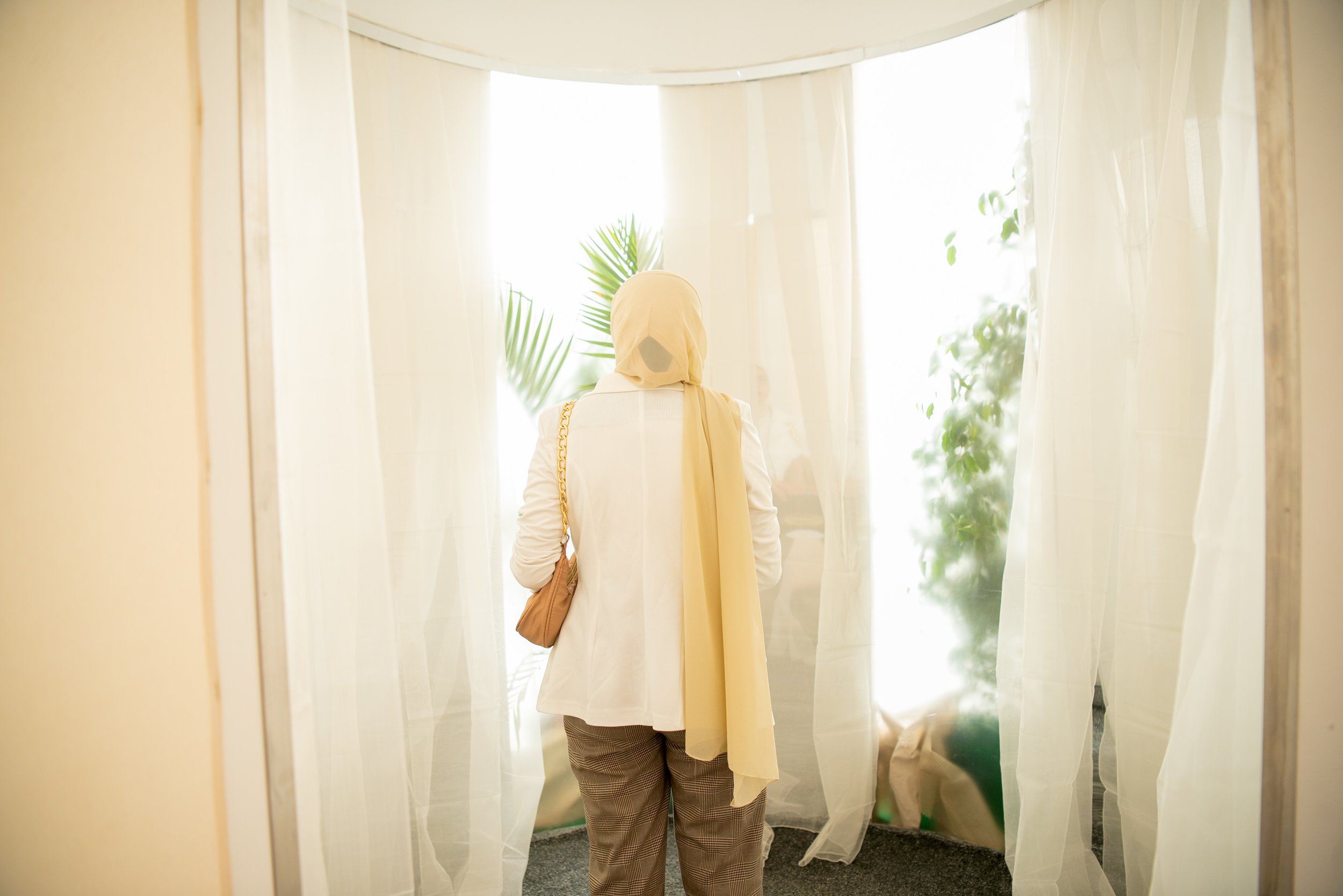
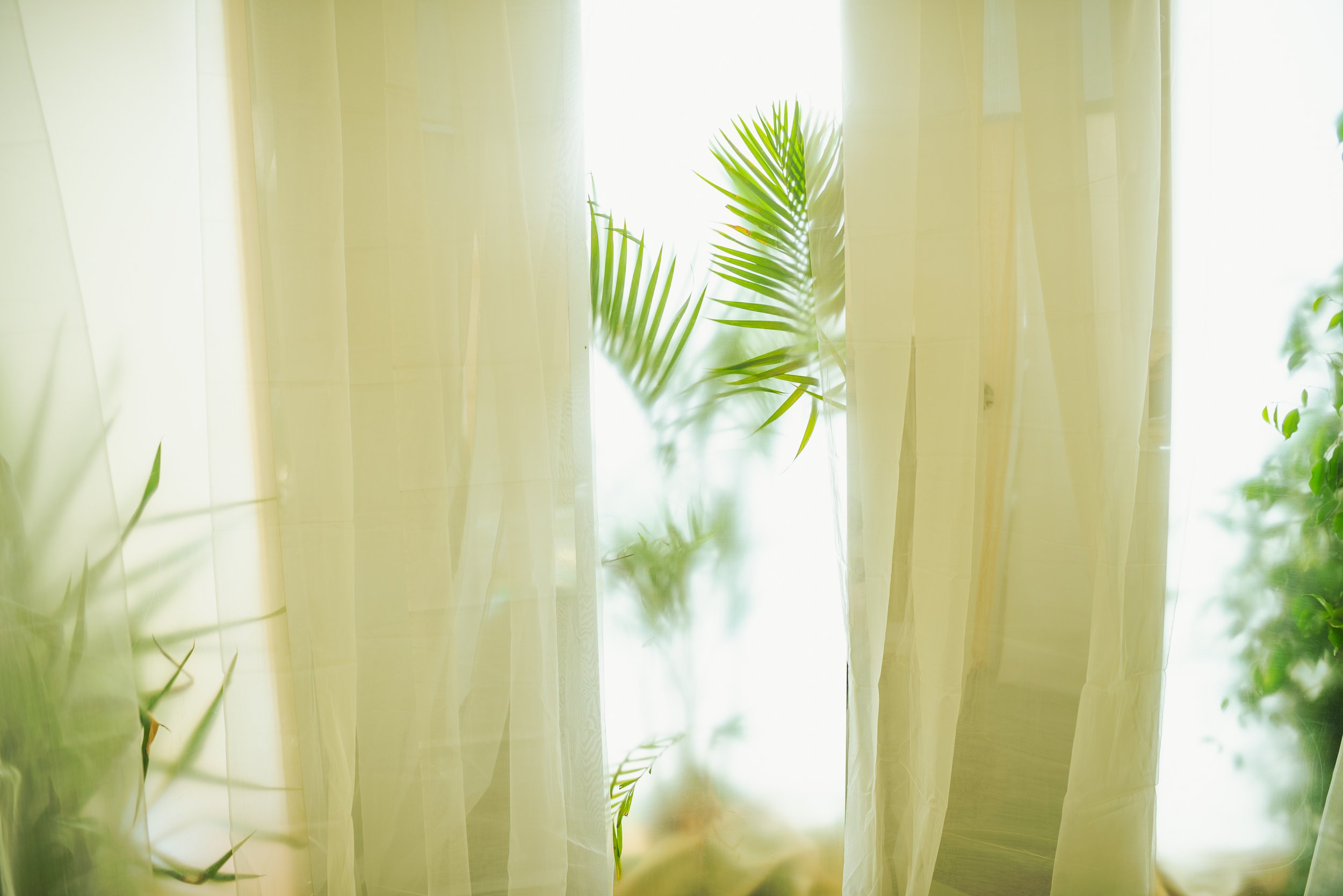
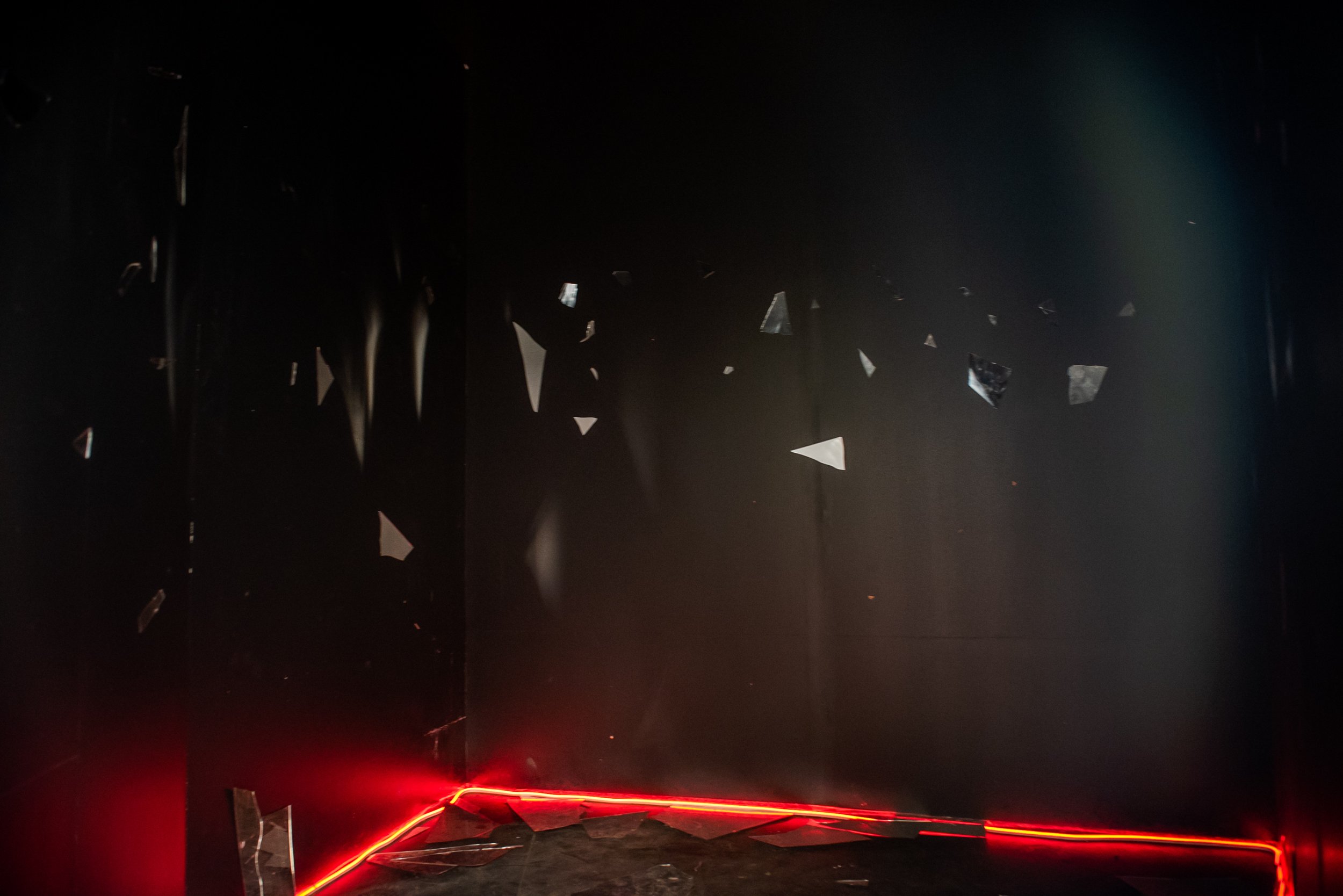
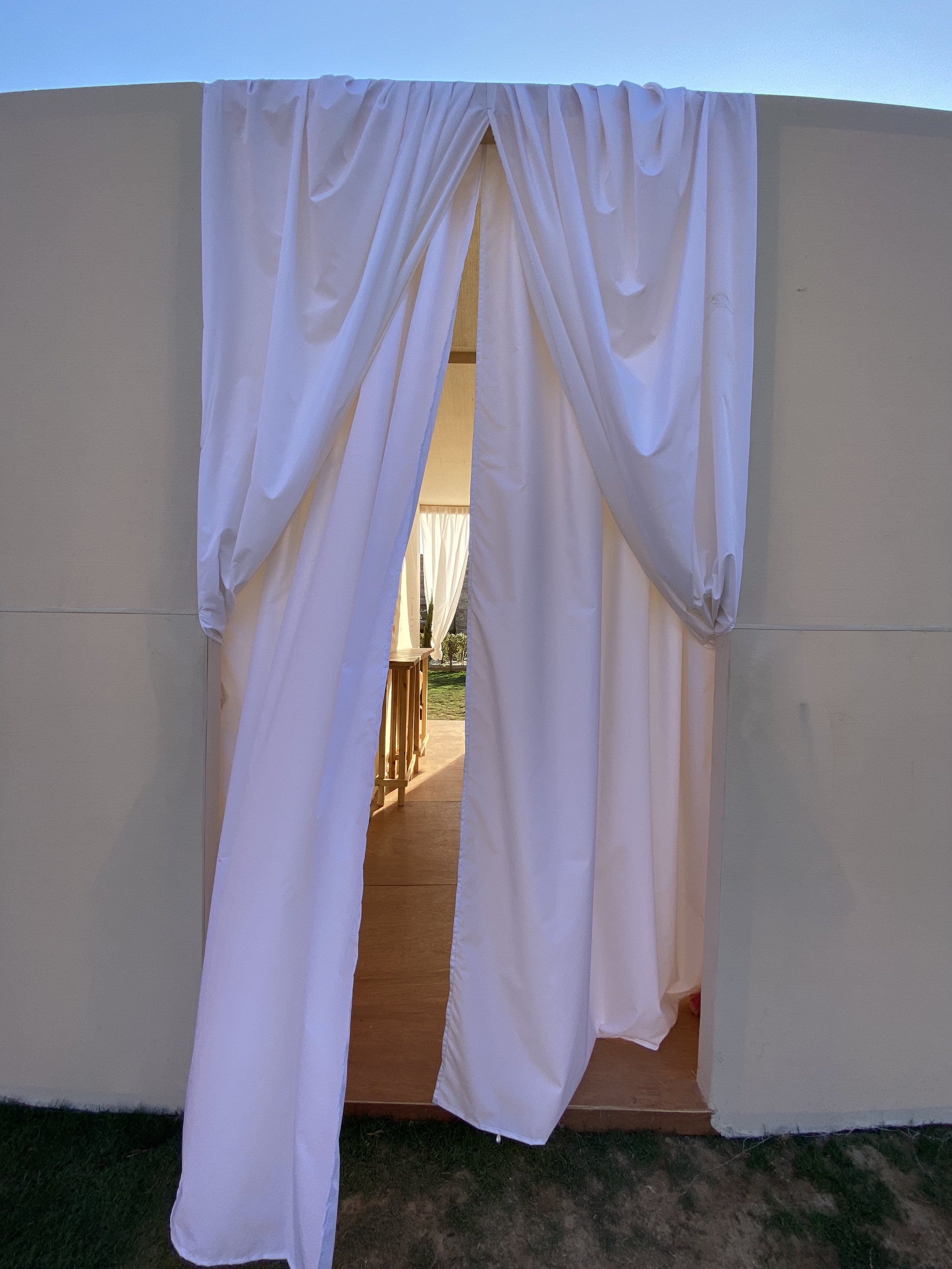

“For many, the perception of eternity is divided between the two poles of heaven in hell. Living in the Anthropocene, we need to ask ourselves, what’s our eternity really going to look like? Are we going to heaven, or are we going to hell?”
The installation is composed of two adjacent rooms: one representing heaven and the other – hell. Participants do not know which of the two “scenarios of eternity” they will be engaging with, as from the outside the rooms look entirely identical.
Before entering, each visitor is given a page from a gamebook (printed fiction that invites the reader to participate in the story by making choices). Based on their choices, and respective sustainability score, visitors are guided to enter either Room 1 or Room 2 – where all their senses are targeted by very different sights, sounds, temperatures, and smells.
In both rooms of the installation, visitors find mirrors — in Hell they are broken, in Heaven they are big and tall. Bahia Shehab says that they prompt reflection: “For us to face our future, we really need to look at ourselves.”
Photos on this page: by Fine Acts, Bahia Shehab, and Amr El-Harery
Welcome to HELL
Hell is a small, dark, angled, claustrophobic space. It smells of sh*t, decomposing fruit, and hospital rooms. It sounds like construction, drilling, and disaster. It is set to 38°C degrees – the Arctic’s highest recorded temperature to date, as well as the body temperature over which a person is generally considered ill/unwell.
Welcome to HEAVEN
Heaven is a light, bright, gentle, domed interior. It is set at a comfortable temperature of 21°C degrees. You are surrounded by nature sounds – birds, water, wind through leaves – and scents of freshness and orange blossoms.
Our piece is based on the concept of “visceral fit”: the theory that people will judge states of the world associated with their current visceral experiences as more likely. Thirst, for example, can increase expectations of drought and desertification. Warmth can increase concern about global warming. We think with our bodies.
During the two weeks of COP, over 3100 delegates experienced our installation (2097 went to heaven, and 1019 went to hell, oops!). We always encouraged people to visit the other room.
The aim of the work is to make people feel like stakeholders in our collective future and to drive action towards making change possible. We are at the point of Earth’s story where we as the main protagonist need to make a crucial decision.
By our collective effort we can turn this planet into heaven or hell.
This work is a call to action. We can change climate change – if we act now, and together. There is a myriad of ways to MAKE A DIFFERENCE. take MEANINGFUL steps to reduce your carbon impact & encourage others to do the same:
After the experience, #COP27 delegates are prompted to fold their pages into an animal-shaped origami – considering the fact that we are not alone on Earth, and the need to keep in mind all species when taking decisions affecting the environment.
THE ARTIST
Bahia Shehab is a multidisciplinary artist, designer and art historian. She is Professor of design and founder of the graphic design program at The American University in Cairo. Her work has been exhibited in museums, galleries and streets around the world. Through investigating Islamic art history she reinterprets contemporary Arab politics, feminist discourse and social issues.
She has received a number of international recognitions and awards, which include the BBC 100 Women list, a TED Senior Fellowship, and a Prince Claus Award. She is the first Arab woman to receive the UNESCO-Sharjah Prize for Arab Culture and is shortlisted for the Tällberg Foundation’s 2020 Eliasson Global Leadership Prize. Shehab holds a PhD from Leiden University in The Netherlands and is the founding director of Type Lab@AUC.
Her publications include You Can Crush the Flowers: A Visual Memoir of the Egyptian Revolution, At The Corner of a Dream, A Thousand Times NO: The Visual History of Lam-Alif and the co-authored book A History of Arab Graphic Design.
Watch her TED talk, A Thousand Times No.
See our previous collaboration on the topic of climate change, Pyramids of Garbage.
CREW & THANKS
Artist: Bahia Shehab
Curator: Yana Buhrer Tavanier / Fine Acts
Producer: Pavel Kounchev / Fine Acts
Artist Assistants: Sara Elbarkouky, Sarah Salib, Tala Al-Fayoumi, Adham Habba
Scent Designer: Nour Sallam
Sound Designer: Lahab
Sound Engineer: Mustafa Sobhy
Structural Execution: Elisha Mosad / Look-Up Advertising
Ministry of Environment: Nadine Salem
Comms & Admin (Fine Acts Team): Svetla Baeva, Sofia Hussein, Petar Trifonov, Ana Alexieva
This artwork is supported by: Fine Acts, The American University in Cairo, Studio 39, Adel Shehab, Amr ElSalanekly
Special thanks to: Dr. Alexandra Adams, Dr. Basil Kamel, Beshoy Atef, Mahy Mourad, Mohamad Daghash, Nabil Tag, Nourhan Abdel Baki, Ramy Elsaid, Dr. Ruth Loos, Sherif Mohamad & Ahmed Elkanary, Carol Sanad, Farah Fawzi, Haidy Darwish, Halla Abdeldayem, Hana El Shaarani, Hussein Akram, Jamila Eid, Julie Bibawy, Karma Amer, Lobna Elbanawy, Mai Al-Najjar, Maram Aboulezz, Mariam Emam, Mireille George, Monia Gobba, Naglaa ElKady, Nariman Saad, Noor Zaher, Pierre Abdelmalak, Rana Atef, Rawan Bayoumy, Salma Nour, Yehia Abdelrahman, Ziad Soliman






